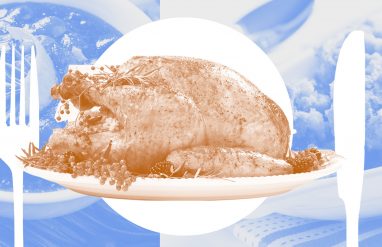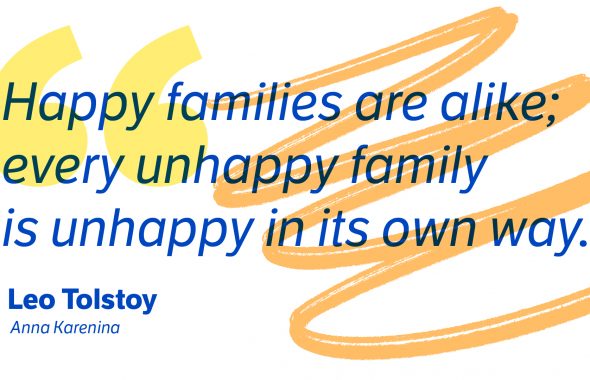How can a word be insulting sometimes … but not always?
One of the many complexities of English is the ability of words to have multiple definitions, which opens the door for some words to be both derogatory and not derogatory, depending on who is using them or when.
These words can be confusing, especially to people who are just learning English and all of its complex nuances. “Why is that word OK to say here … but not there?”
Let’s take a look at some of the words that often draw debate, so we can see when they’re OK to say and when we should steer clear.
monkey and ape
Curious George and those winged creatures who did the Wicked Witch of the West’s bidding in the Wizard of Oz are monkeys, and you’ve probably been using that word to describe them for as long as you can remember. And, King Kong—that is what we might refer to as an ape. That’s as it should be.
A monkey, by definition, is “any mammal of the order Primates, including the guenons, macaques, langurs, and capuchins, but excluding humans, the anthropoid apes, and, usually, the tarsier and prosimians.” Ape is defined as “any of a group of anthropoid primates characterized by long arms, a broad chest, and the absence of a tail, comprising the family Pongidae (great ape), which includes the chimpanzee, gorilla, and orangutan, and the family Hylobatidae (lesser ape), which includes the gibbon and siamang.”
Calling the animals by their appropriate names is not a slur.
It’s even OK to call certain people “monkeys.” After all, small children are often likened by their parents to the person-like beasts, and this affectionate appropriation of the term has been in existence since the 1600s. And, ape and monkey can both be used as verbs. To ape something is “to imitate it,” while monkeying with something means “to play with it.”
So, where’s the problem?Ape and monkey are considered offensive terms when they’re used to describe a person of color. It’s what is known as dehumanizing language, “language that deprives a person of human qualities or attributes.”
Exactly when the words became slurs is unknown, but offensive comparisons of black people to apes date back hundreds of centuries. As recently as the late 1800s, for example, when scientists Josiah C. Nott and George R. Gliddon created the 1854 Types of Mankind (then the leading scientific text on race), they compared black people not to other (white) people but to chimpanzees, gorillas, and orangutans.
When used in these contexts, monkey and ape are considered extremely derogatory slang.
ghetto
The word ghetto comes from Italian, a noun derivative of
ghettare, which means “
to throw.” Officials in Venice, Italy were among the first to force Jewish residents to live together in isolated areas, away from other citizens. The Italian name for those places? Ghettos.
The word was later used to describe similar isolated areas in which the Nazis forced Jewish people to live, cut off from their friends and neighbors and typically stuck in deplorable conditions. By the time the word made its way into English, the relationship with Jewish people was gone. Ghetto came to mean “sections of cities where marginalized people lived, typically segregated from other citizens, often living in poverty.”
If you’re referencing historical ghettos, such as those where Jewish people were forced to live, the word is accepted in writing and polite conversation.
When ghetto is used as an adjective, meaning that something is “unrefined, low-class, cheap, or inferior,” the word is considered derogatory. After all, you’re using a descriptor for someone’s neighborhood in a negative sense. It’s also considered derogatory to refer to someone’s neighborhood in this way.
WATCH: What's So Wrong With "Nice"?
oriental
Head to an estate sale, and you may find yourself discussing the price of an oriental rug or some oriental jewelry. Surely these words are OK to use, right?
Well, yes … if you’re talking about jewelry or rugs rather than people. When used as an adjective, oriental means “of, relating to, or characteristic of the Orient, or East; Eastern.” It’s a way to describe things that come from the area of the world once known as the Orient but more commonly referred to as East Asia or Southeast Asia today.
It’s a word that was also once used to refer to people who were either born in that sector of the world or whose ancestors were, but using oriental as a noun is now considered offensive slang. It’s even been banned from usage in federal law, as well as in a number of states, where official documents may only refer to people as Asian Americans, rather than the dated term.
savage
The word savage has taken a circuitous path through the lexicon over the years, first showing up in English in the 1200s from Middle English. As an adjective, it’s typically meant “fierce, ferocious, or cruel; uncivilized; barbarous.” When referring to a savage lion ripping an antelope apart on the African Sahara, that’s all well and good.
But, the use of savage as a noun to describe human beings dates back to approximately the 1400s. At a time when Christopher Columbus was enslaving Native Americans and claiming their lands and work for his own, the word became a slur used by white Europeans to describe Native American people. The usage stuck around for hundreds of years, and it’s still a word that many indigenous peoples around the world find offensive.
There has been some reclamation of the word as internet slang, as more people use the adjective form to describe actions they deem to be especially fierce. However, the racist connotations are hard to ignore, and it may be wise to choose another word to describe something you love on the internet. Might we suggest badass?
chink
When the word chink first showed up in the English language back in the 1500s, it was a simple word to explain “a crack or split.” That’s what chine meant in Middle English, after all, and the addition of the k created a word that’s often used today to describe that crack between the curtains that lets the light through.
Sometime in that era the phrase chink in one’s armor was also born. It was a time when armor was made of chainmail—think medieval knights—and a gap or chink in the armor was a dangerous vulnerability. Which is why the idiom is now used today to mean a vulnerable area.
So, how do you go from the innocent chink to the incredibly offensive version?
That happened some time in the 1900s when people started using chink to refer to people from China (or people who the speaker believed were from China). Believed to be an irregular formation of the word China, the word is derogatory when used to describe a human being.
coon
When a raccoon is feasting in your garbage cans, you might call pest control to come take care of that coon, and no one would think poorly of you.Coon is what linguists call an aphetic form of raccoon, a word formed when a vowel or syllable has been dropped. When used to refer to the nocturnal critter with a taste for days-old food, it’s otherwise inoffensive.
The same goes for the saying in a coon’s age. Although the reference is dated and not often used in modern English, when it was coined as a more colorful way to say “in a long time,” the phrase referred to the trash-eating critters with the black fur masks. The idiom was born thanks to a belief that raccoons lived for a long time (a myth disproven by biologists).
It’s when the word is used to describe a person of color that it becomes an extremely derogatory slur.
This form is believed to have shown up in English in the 1800s, although a lead character in the colonial comic opera “The Disappointment” from the 1740s is a black man named Raccoon. It’s believed that the origin of the slur could be from the Portuguese barracoos, “building constructed to hold slaves for sale.”
Wherever it originated, it’s yet another word that should not be used regarding people.













